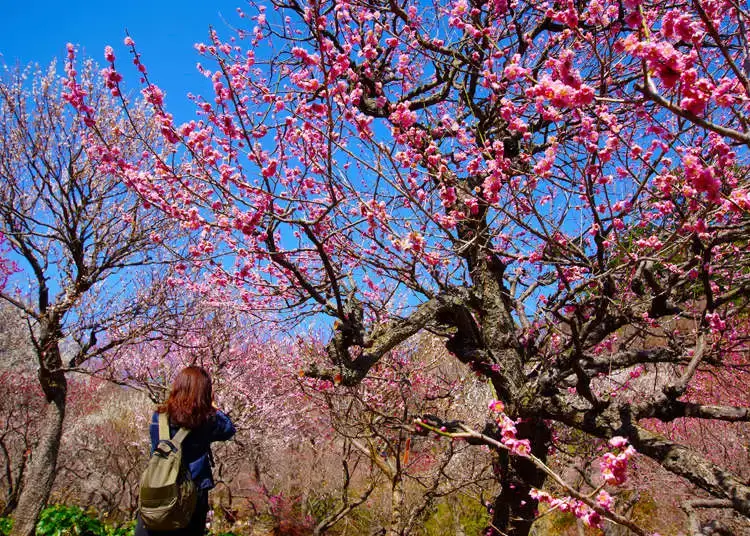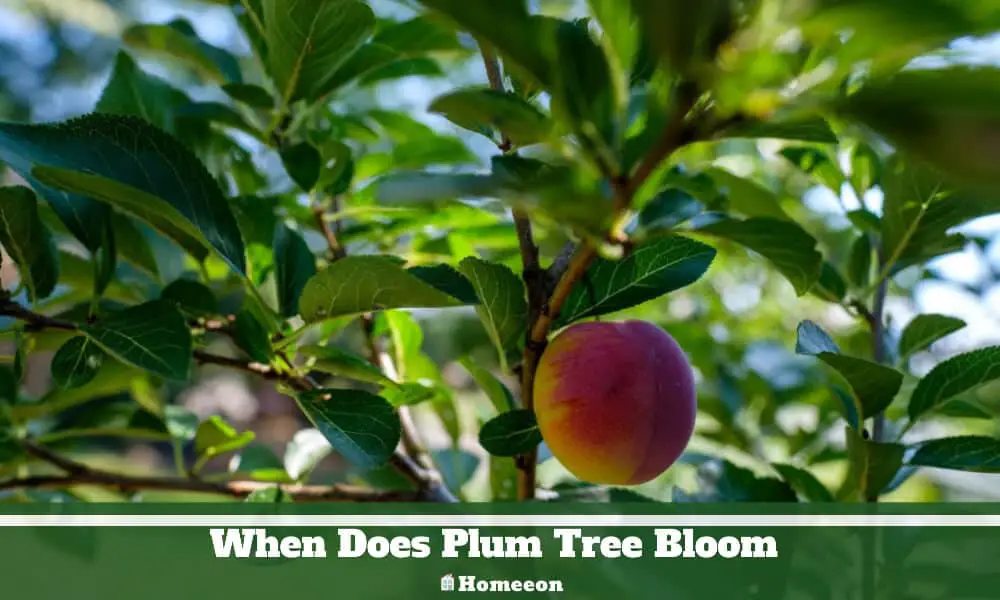Last Updated on August 9, 2023 By Emma W. Thomas
Plum trees typically bloom in early spring, around March to April, depending on the climate and variety. Warmer regions may see blooms earlier, while cooler areas might experience flowering slightly later.
When Does a Plum Tree Bloom the Most?
Plum trees, with their delicate blossoms and delicious fruits, are a beautiful addition to any garden or orchard. But if you’re wondering when exactly these trees bloom, we’ve got you covered. Understanding the blooming period of a plum tree is crucial for proper care and maintenance. So, without further ado, here’s everything you need to know about when plum trees bloom.
- Different Varieties, Different Timing:
Plum trees come in various cultivars, and their blooming time can vary based on the specific variety. Generally, plum trees begin to bloom in early to mid-spring, but the exact timing depends on the cultivar and the climate of your region. Some early-blooming varieties may start as early as late winter, while others may wait until the warmer days of spring to burst into bloom. - Chill Hours and Bloom Time:
Plum trees, like many fruit trees, require a certain number of chill hours to bloom and set fruit. Chill hours are the number of hours a tree experiences temperatures between 32-45°F (0-7°C) during winter. Different plum tree varieties have different chill hour requirements. If your region doesn’t experience enough chill hours, your plum tree may have delayed or reduced blossoming. - Climate Plays a Role:
The climate in your area significantly affects the plum tree’s blooming period. Generally, plum trees thrive in regions with mild to cool winter climates and moderate spring temperatures. They need a good balance of cold weather for dormancy and warm weather for flowering. However, certain varieties are more adaptable to warmer or colder climates, so check with local experts or nurseries to choose the right variety for your area. - Signs of Blooming:
Identifying the signs that your plum tree is about to bloom can be a delightful experience. Just before the blossoms appear, you may notice slight swelling or reddening of the buds. As the trees prepare to bloom, the buds will continue to expand, and you’ll begin to see a burst of vibrant colors, ranging from pale pinks to deep purples. Once in full bloom, the tree will be adorned with clusters of fragrant flowers that attract bees and other pollinators. - Pollination and Fruiting:
Plum trees require cross-pollination to produce fruits. In most cases, this means that you need to plant two different plum tree varieties in close proximity to ensure successful pollination. Be sure to choose compatible varieties that flower around the same time for efficient cross-pollination. If you only have room for one plum tree, select a self-pollinating variety or consider using a pollination aid, such as hand pollination or grafting. - Duration of Bloom:
The blooming period of plum trees typically lasts for about two weeks, although it may vary depending on the variety and weather conditions. During this time, the blossoms will open gradually, starting from the bottom of the tree and working their way up. Enjoy the spectacular display while it lasts, as the petals will eventually fall, making way for the development of fruits.
How Plums Pollinate

For proper pollination of plum trees, you need to plant varieties that bloom at the same time. European and Japanese varieties bloom at different times and can therefore not act as pollinators for each other. The trees you choose need to be cross-compatible, and the pollinators should have enough pollen to set fruit successfully.
If bloom periods do not overlap, a self-fertile tree can be used to pollinate any other plum. Self-fertile species are generally used as universal pollinators, for example, ‘Santa Rosa.‘ This tree is self-fruitful, and it thrives in USDA hardiness zones 4-9.
What Is Chill For Plums?
The winter chill is an extended time of cold temperatures, vital for nut and fruit trees. The amount of winter chill depends on the tree variety, and some need more than others. Most Japanese plums require 500-900 hours of temperatures below or at 450F, while European plums usually need 700-1000 chill hours.
European varieties cannot grow in areas with too mild winters since they have moderate-high winter needs.
Do Plum Trees Bloom Every Year?
Plum trees do not bloom each year since most of them require 3-6 years to mature after planting. But dwarf varieties may begin to bear fruits one year sooner than standard plum tree varieties. Some problems such as over-pruning the branches, over-fertilizing the trees, and frost injury of flowers may delay a plum tree’s bloom by at least one year.
A tree grown from a seed harvested from a plum tree may end up not bearing fruits. To get fruits from such trees, it is advisable to select a tree established from a nursery. If you see biennial bearing in your plum plants, it means they will flower and bear fruits each year. This blooming occurs after a year of heavy fruit yield.
Plum trees use a lot of nutrients to yield significantly and nearly exhaust their resources. They will then take up to one year to regain their strength and prepare to bloom the following year.
You can use fruit thinning to prevent biennial bearing on your plum trees. To do this, you need to trim the fruit in the early stages to allow each branch to have a plum every 4 to 6 inches.
Factors That Affect Plum Tree Blooming
You can get quality products from your plum trees if you take good care of them. The following factors will determine whether you will get a high or low yield from your trees;
1. Watering
If your plum trees are young, do not allow the soil to get too dry. However, you should not apply too much water, resulting in the rotting of roots or fungal diseases that will affect the trees. For older plum trees, you need to water deeply but infrequently to stimulate the root system’s growth. The roots grow broader and deeper stead of staying near the soil surface or remaining shallow, helping the plum trees survive during neglect or drought periods.
2. Temperature
Many plum tree varieties can thrive in zones up to 5 and as far south as 7, 8, or 9 depending on the species. But, the trees may not survive further south since they need about 500-1000 hours of chilling hours in the winter. A plum tree that doesn’t get adequate chilling hours cannot break dormancy in the spring, which leads to a total lack of fruits and flowers.
Late spring frost can also be hazardous to your harvest. If your plum tree gets a cold snap after breaking dormancy in the spring, it can lead to the death of all flowers. If the plum tree produces flowers too early during a gentle winter, the flowers can die and destroy any chance of harvest that year.
3. Pruning
Heavy annual pruning is recommendable for plum trees as it helps to prevent biennial bearing or broken branches. Pruning should be carried out during summer or winter, but the needs may vary as per the variety.
4. Fertilizing
Before planting a stone or plum tree, it is advisable to add some compost to the soil. Fertilizing your soil provides organic matter and nutrients for trees when growing. You can use compost made from your regular kitchen and yard waste.
You can also supplement your compost with commercial fertilizers to give extra nutrients to the soil. You may conduct a soil test to establish if your ground needs more nutrients. Ensure that you do not over-fertilize your ground as doing this can kill or harm your plum trees. Avoid too much nitrogen fertilizer, which can prevent your trees from blooming.
Why Your Plum Tree Is Not Blooming

Plum trees need full sun to bloom and set fruit. If your plum trees do not get adequate sunlight, it may lead to a delay in flowering or lack of it altogether. It would help if you placed your trees to get a minimum of six hours of sunlight every day. Make sure that your trees are not placed where buildings and other plants shade.
Bacterial canker also prevents your plum trees from blooming. You will notice bacteria canker symptoms in the spring, including limb dieback, leaf spot, and rough cankers, that can cause flowers and young shoots to die and dry up. When the spring temperature drops and the moisture levels go up, the bacterium may be common. Splashing rain may also spread the disease and affect plum trees between 2 and 8 years old.
Fungi may cause brown rot and black knot that also prevent your plums from blooming. Brown rot, also known as Monilinia fructicola, is responsible for blossom and twig blight, and many flowers that come out will change to brown and eventually die. The black knot, also known as Dibotryon morbosum, is active in the spring affecting new growth and disrupting average growth. It also overwinters in the twigs and branches.
Severe pruning of plum trees may also prevent them from producing fruits. Plum trees need little pruning once the framework is established. It is not advisable to prune hard and frequently, as this may affect the growth and production of flowers. Removing large branches may harm the trees and cause wounds that will not heal properly, leading to easy access to disease.
Heavy pruning will also get rid of the one-year-old shoots that are vital for flowering.
Conclusion
Plum trees bloom in late winter to early spring, but it depends on the species, cultivar, and climate. You need to take good care of your trees and ensure that they get the essential nutrients and conditions to produce their fruits on time and in the correct amount.
References:
https://www.thespruce.com/plum-blossom-meaning-5270497
https://www.garden.eco/when-do-plum-trees-bloom
Emma is a graduate of Domestic Science or Family and Consumer Sciences (Home Economics) from the University of Wisconsin. She has 7 years of experience Working with the strategic section of BestBuy and now writing full-time for Homeeon.
From Managing the Home, Interiors, Cleaning, and Exteriors to Gardening and everything about Making A Home Liveable – is her passion and this Homeeon is the result of this.
Emma loves decorating her home with the best stuff found online. She cares about quality over anything and writes reviews about them here in Homeeon. Get in touch with her over Pinterest.
Keep reading her blogs.

